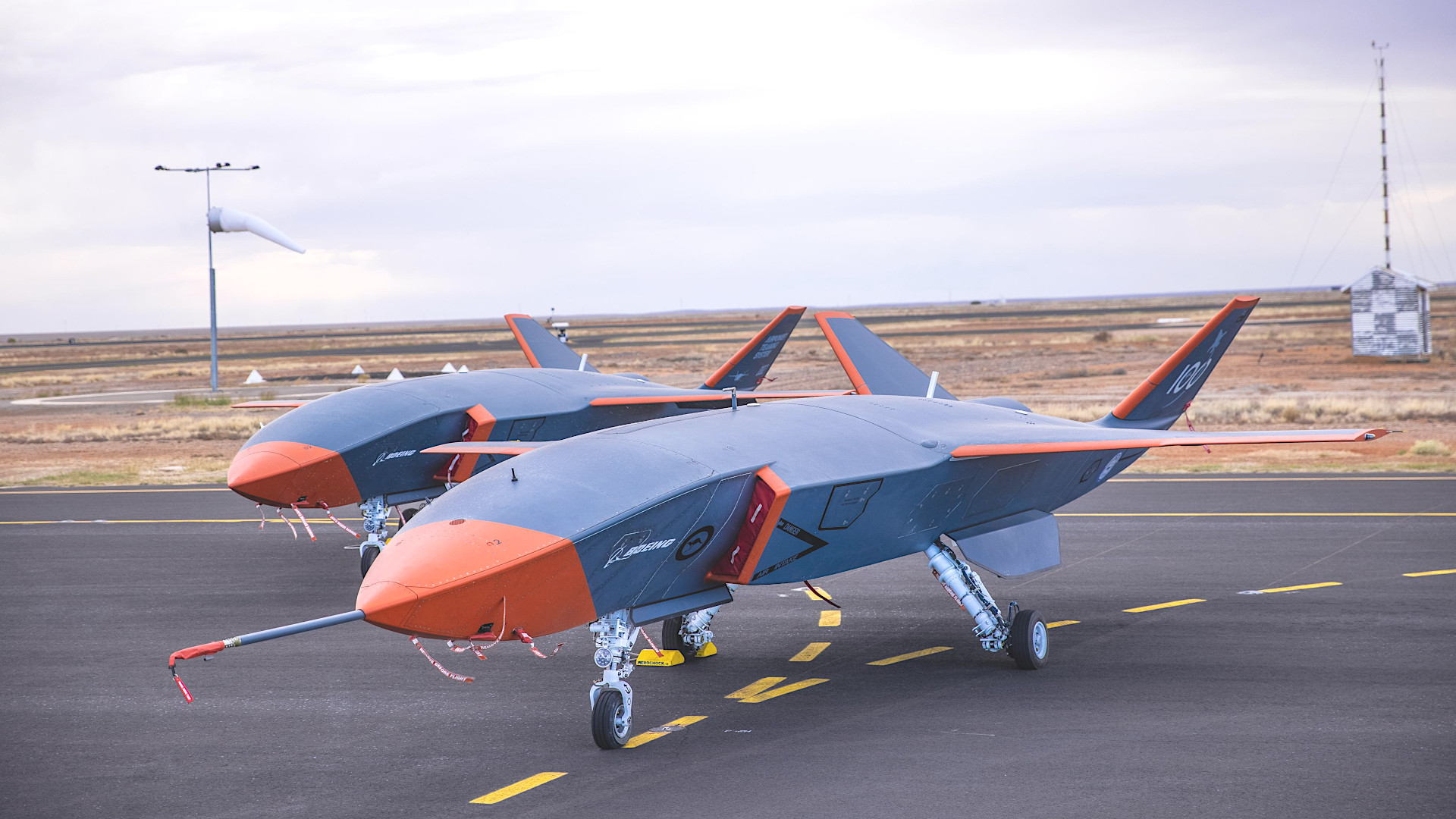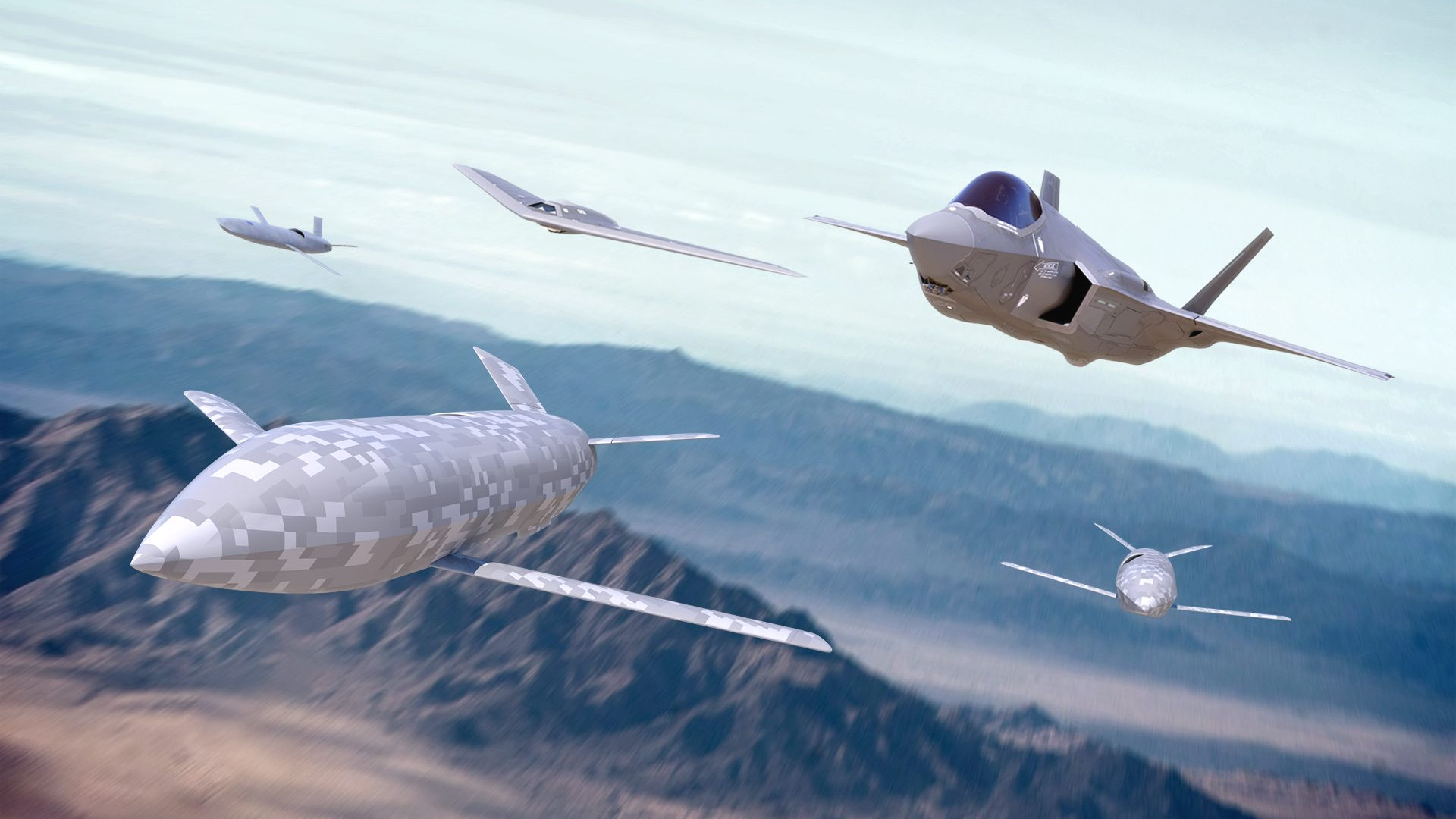Secretary of the U.S. Air Force Frank Kendall expects a competition to acquire advanced unmanned aircraft with significant autonomous capabilities designed to work closely with manned combat aircraft to kick off in the 2024 Fiscal Year. Specific details about the effort to acquire these drones – which the service is currently referring to as Collaborative Combat Aircraft – are likely to be limited, as this will be a classified ‘black’ program.
Kendall offered these and other details about the service’s Collaborative Combat Aircraft plans during a talk earlier today at the 2022 Defense News Conference. The Secretary also made comments on other topics of significance to the Air Force, including expressing cautious optimism about progress in the development of the AGM-183A hypersonic missile following successful flight tests this year and a desire to find potential ways to speed up his service’s acquisition of new E-7 Wedgetail airborne early warning and control aircraft.
In talking about the future Collaborative Combat Aircraft (CCA) competition specifically, Kendall added that the Air Force has already been having preliminary discussions about it with companies involved in the service’s Next Generation Air Dominance (NGAD) program, as well as its Skyborg project. CCA is one component of the larger collaborative NGAD effort, which also includes efforts to develop next-generation manned combat aircraft, weapons, sensors, networking and battle management systems, jet propulsion technologies, and more.
The Air Force Secretary specifically mentioned Boeing’s MQ-28 Ghost Bat drone, originally developed for the Royal Australian Air Force’s (RAAF) Airpower Teaming System (ATS) program, as one possible entrant. The Air Force recently revealed that Boeing had brought an MQ-28 into the United States, but did not say whether the service had any active plans to test and/or evaluate the design in any way. Kendall said that the Air Force has seen “a lot of interest” from the Australian government, as well as officials in the United Kingdom and Japan, in the service’s CCA plans.

As he has said in the past, Kendall described a notional concept of operation that could see five or more drones capable of engaging targets in the air or on the ground with traditional munitions, launching electronic warfare attacks, acting as sensor or communications relay nodes, or simply serving as decoys, all working collaboratively with a single manned aircraft. As The War Zone has highlighted on multiple occasions, assigning different limited mission sets to different drones within a larger group, or even a fully-networked swarm, has the potential to offer immense benefits in terms of operational flexibility and the likelihood of successfully carrying out a mission, even in the face of robust enemy air defenses.
“[This] raises the uncertainty that the adversary has to deal with because he doesn’t know what’s in any given aircraft,” Kendall himself explained today, according to Defense News “He has to take each of them seriously as a threat. So whether they all carry weapons, or a subset carry weapons, he has to treat them all as if they do. He doesn’t get a choice.”
This is a concept that The War Zone laid out in detail years ago, as you can read more about here.
“One of the things we need to do as we’re developing the uncrewed combat aircraft mission equipment capability and finalizing the requirements is to start to learn about how an aircraft like that would fit into an operational unit,” Kendall added. “How you structure the unit, what kind of support people you’d have to have, how you’d integrate it into battle management and into operations.”
When talking about the Air Force’s new F-15EX Eagle II combat jets and the F-15C/Ds Eagles they’re set to replace earlier this year, Kendall noted that some of the squadrons now equipped with the older Eagles could lose their flying missions altogether.
Being able to limit the required capabilities for each individual drone opens the door to great freedom of choice when it comes to the underlying designs, as well as how much they might cost. “Sound judgments can be made on whether the requirements are really worth the cost or not,” Kendall said.
“The expectation is that these aircraft can be designed to be less survivable and less capable, but still bring an awful lot to the fight in a mixture that the enemy has a very hard time sorting out and dealing with,” he added, according to Breaking Defense. “You can even intentionally sacrifice some of them to draw fire, if you will, to make the enemy expose himself.”
With all this in mind, what an actual CCA competition might look like is unclear, and Kendall indicated that the service is still ironing out the details. Lockheed Martin’s Skunk Works recently unveiled an entirely new proposed manned-unmanned ecosystem incorporating multiple tiers of drone designs, which could reflect, at least to some degree, the Air Force’s current internal deliberations. Northrop Grumman, by way of its subsidiary Scaled Composites, has presented its own multi-drone concept in the past.

However, it is very unlikely that the final CCA acquisition strategy will be a winner-take-all arrangement given that the Air Force is envisioning a family of CCAs that could potentially be very different in form and function. Leveraging the strengths of different companies could help speed up the development process and reduce costs. The War Zone has noted in the past that a similar approach is likely being applied to the separate development of a new sixth-generation manned combat jet under NGAD. There are also indications that this kind of strategy may already be playing out, at least to some degree, in the NGAD program’s Next Generation Adaptive Propulsion (NGAP) advanced jet engine effort.
With respect to the manned NGAD combat jet project, it’s interesting to note that Secretary Kendall appeared today to walk back earlier comments about it entering a traditional engineering, manufacturing, and development (EMD) phase. He said that developmental work was continuing in this regard after the completion of a preliminary design review process, but not necessarily at the level of a typical EMD effort.
In addition, while Kendall has publicly dismissed the idea of using a more novel, iterative approach to the development of the manned NGAD combat jet, he and other Air Force officials have left the door open to doing so with the CCAs. The Digital Century Series concept, first proposed in 2019 by former Assistant Secretary of the Air Force for Acquisition, Technology, and Logistics Will Roper is one possible development and acquisition model that is often discussed in this context. Digital Century Series, as laid out by Roper, had a heavy emphasis on short development cycles, supported by advances in rapid prototyping and digital engineering, as well as small batch production, all of which you can read more about here.
As already noted, the Air Force Secretary also specifically cited Boeing’s MQ-28 as an existing relevant platform that could potentially be used for various kinds of developmental and operational test and evaluation work ahead of a formal CCA program. Secretary Kendall has previously said that the MQ-28 could be useful as a “risk reduction” tool and that ATS would be a “technology feeder” for developing future Air Force unmanned aircraft.

The service has made clear that the Skyborg program, which is centered on the development of an artificial intelligence-driven “computer brain” and a suite of associated systems that could be used to operate various types of unmanned aircraft, will feed into the CCA effort, as well. In 2020, Boeing, along with General Atomics and Kratos, had been awarded contracts to provide actual drones to carry the Skyborg systems during various tests. However, the Air Force recently disclosed that Boeing was no longer actively involved in this particular project.

“While we can’t comment on specifics of the Skyborg program, we can say is that the Boeing Airpower Teaming System is designed for operational requirements that we see customers needing around the world,” a Boeing spokesperson told The War Zone in a statement after we asked for comment on the Skyborg news. “The work we are doing in Australia is in partnership with the Australian government, but lessons learned from that project will help inform Boeing ATS as it progresses, and we see applicability of ATS in a range of markets.”
So, it is not at all surprising that Australia is among the American allies that have expressed interest in the CCA project. There are already indications that the U.S. Air Force and RAAF are actively cooperating on secretive aviation projects, which could include unmanned systems, as you can read more about here.
British interest is similarly unsurprising given that the U.K. Royal Air Force (RAF) has been pursuing its own advanced manned-unmanned teaming projects in recent years and is looking to expand that work. In July, BAE Systems unveiled two new drone designs with a clear eye toward meeting forthcoming RAF, as well as Royal Navy, requirements.

The Air Force is clearly interested in potential cooperation, and burden-sharing, with other top-tier allies, such as Japan.
All told, it remains to be seen exactly how the Air Force proceeds with its CCA ambitions, and what details about it the service will disclose, but its future manned-unmanned teaming vision is very much coming ever more into focus.
Contact the author: joe@thedrive.com
